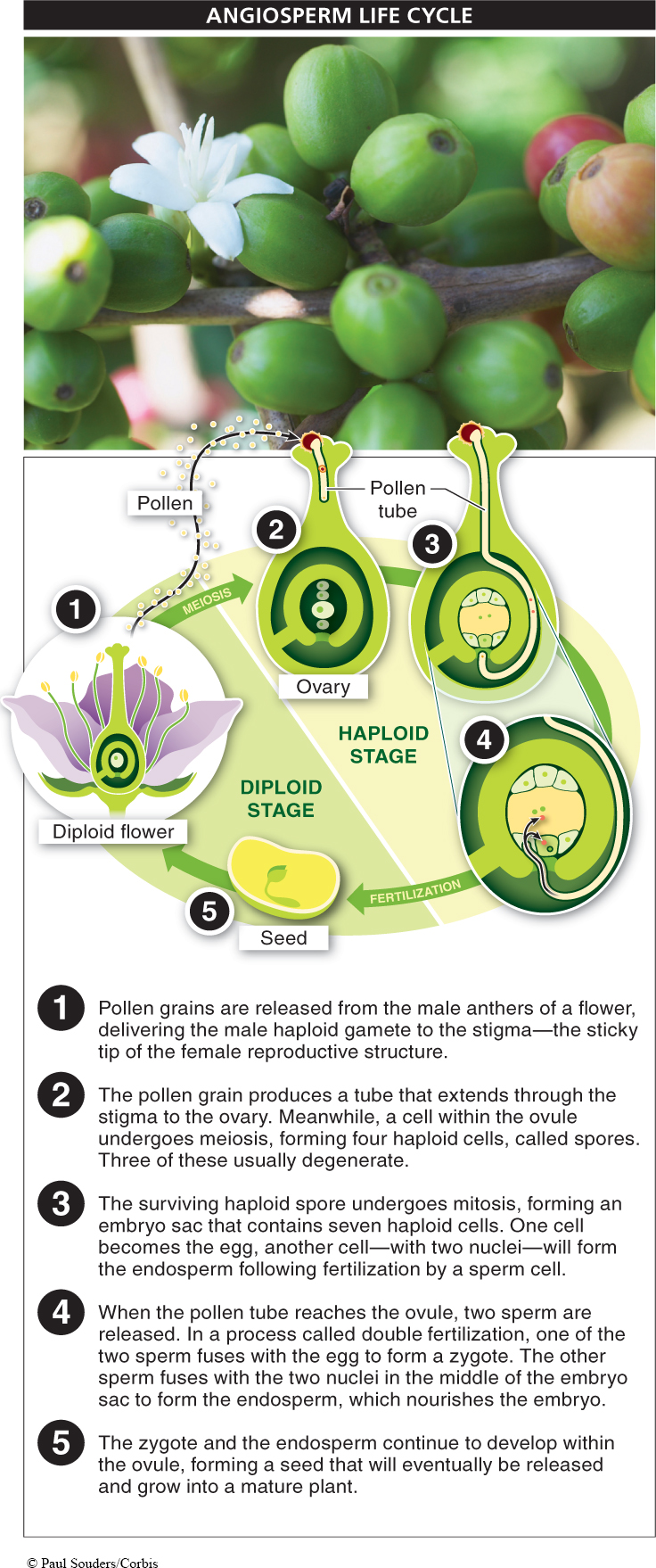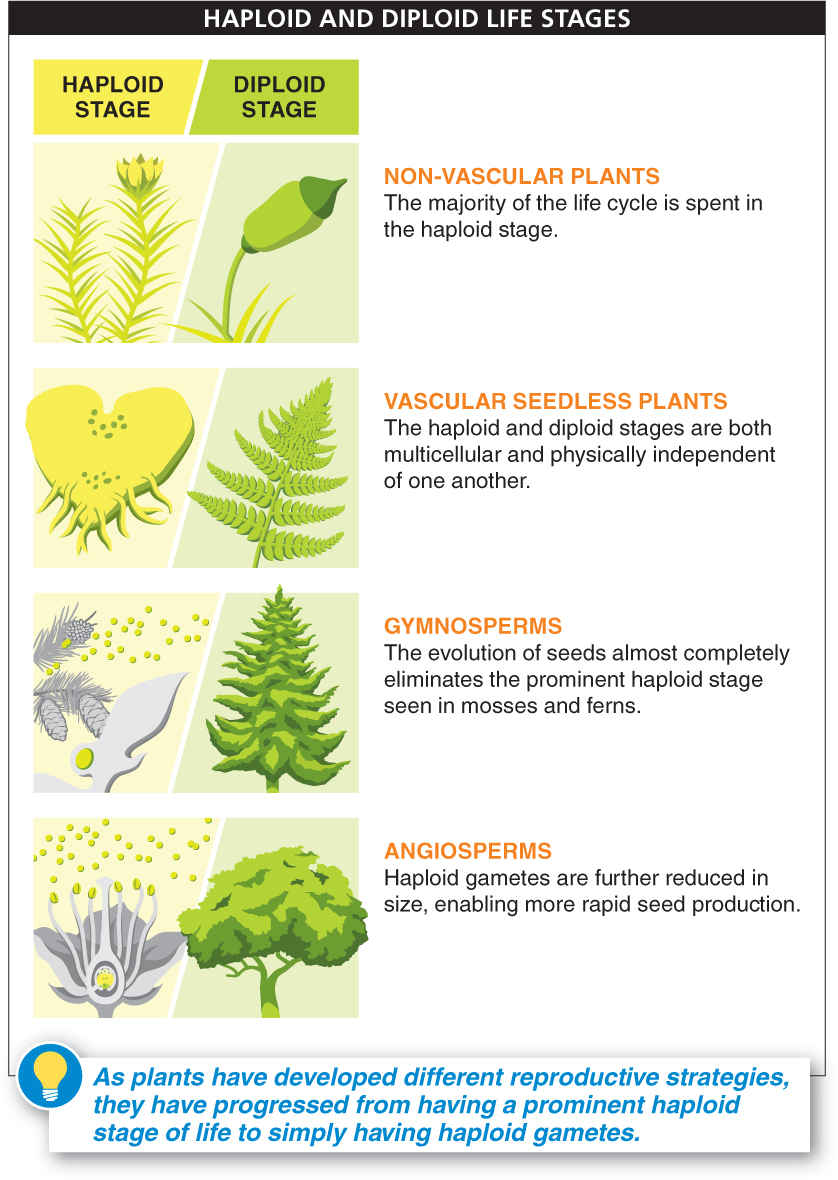The process of fertilization—
When we left off in the previous section, a pollen grain—

While the pollen tube is growing, a cell within the ovule undergoes meiosis, forming four haploid cells, called spores. Three of these usually degenerate. The surviving haploid spore enlarges and undergoes mitosis, forming an embryo sac. A large, central cell in the embryo sac has two haploid nuclei. One of the other cells in the embryo sac is the haploid female gamete (the egg), which remains near the place where the pollen tube will be guided into the ovule by two other haploid cells within the embryo sac.
When the pollen tube reaches the ovule, one of the two sperm fuses with the egg to form a zygote. The other sperm fuses with the two nuclei in the middle of the embryo sac to form the endosperm, which has three sets of chromosomes (i.e., is triploid). The process is called double fertilization because two sperm enter the ovule and combine with female cells in two separate events, forming (1) a zygote (with two sets of chromosomes) and (2) an endosperm (with three sets of chromosomes).
The final steps in producing a seed occur as the diploid zygote cell undergoes multiple mitotic divisions to form an embryo, while the triploid cells multiply mitotically to produce the endosperm that will provide nutritional support for the seedling through its initial growth stages. The outer layers of the ovule form the seed coat that will protect the seed until it sprouts. The enclosure of the seed within the ovary is a distinction between angiosperms and gymnosperms. The seeds of a gymnosperm are unenclosed and are sometimes referred to as “naked.”
513
What advantage does double fertilization give angiosperms?
In gymnosperms, a single sperm fuses with an egg to form a zygote in an ovule that contains hundreds of other female cells, which are used as a source of nutrients for the resulting embryo. By contrast, there are two important advantages that double fertilization offers angiosperms.
1. Double fertilization initiates formation of endosperm only when an egg is fertilized. Waiting to be sure that an egg is fertilized is a good strategy, because making endosperm is a large energy investment for a plant. Gymnosperms invest that energy up front, and nutrients in ovules that are not fertilized are wasted because those “seeds” do not contain an embryo. In contrast, angiosperms do not waste energy forming endosperm in ovules that will not contain embryos.
2. Angiosperms can produce smaller gametes than gymnosperms, because the large energetic reserves will be produced only after fertilization occurs. The small size of the male and female gametes of angiosperms ensures that seeds are produced quickly. FIGURE 12-24 shows that as different reproductive strategies have evolved in plants, their gametes have become progressively smaller. Rapid production of seeds allows angiosperms to grow as annual plants (plants that complete their life cycle from sprouting to seed production in one growing season), which is something gymnosperms cannot do.

Do flowers with both male and female structures fertilize themselves?
Outbreeding, the combination of haploid cells from two different individuals, produces offspring with greater genetic diversity (that is, carrying a greater diversity of alleles) than offspring that result from inbreeding, the combination of a male and female gamete from the same individual. Angiosperms have a variety of ways to increase the chance that only sperm from another individual will fertilize the female gamete. Plants that have male and female reproductive structures in different flowers or even on different individuals, for example, increase the chance that a pollen grain landing on a stigma comes from a different plant. But many flowers with both male and female parts also have mechanisms to prevent self-
TAKE-HOME MESSAGE MESSAGE 12.10
Angiosperms undergo double fertilization, which ensures that a plant does not invest energy in forming endosperm for an ovule that has not been fertilized. Angiosperms have also developed methods to reduce the occurrence of selffertilization and increase genetic variation among offspring.
Double fertilization results in the formation of the energy-
Double fertilization also allows angiosperms to produce smaller gametes than their gymnosperm counterparts, allowing more rapid production of seeds.
514